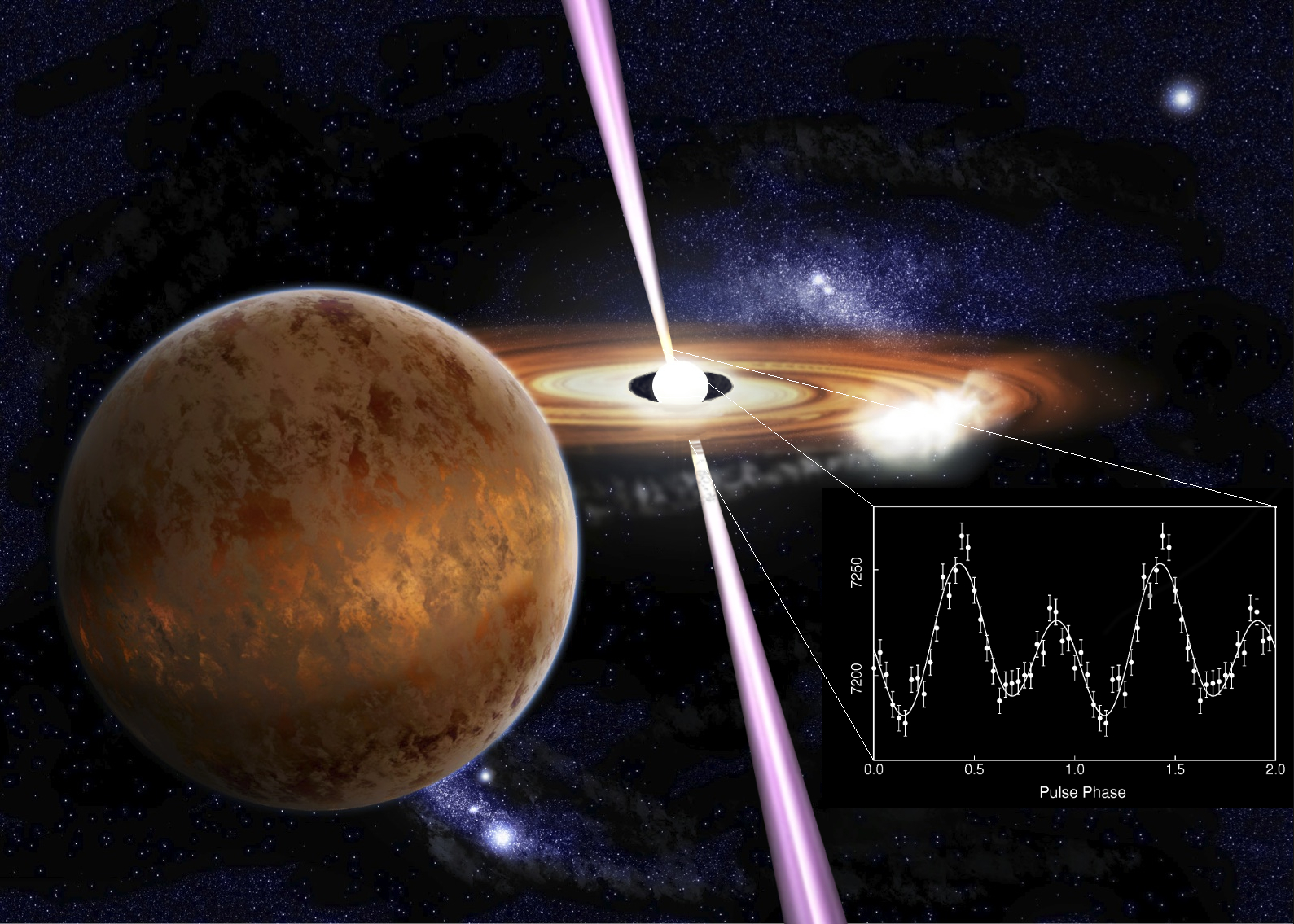Millisecond Pulsars

Millisecond pulsars (MSPs) are the quickest spinning stars in the Universe. Every second, these neutron stars spin hundreds of times around their axis, attaining 10-15% of the speed of light at their equator. This extreme property makes millisecond pulsars ideal objects to measure the internal properties of neutron stars and turn them into laboratories for nuclear physics.
Millisecond pulsars are also the oldest neutron stars we know. Their current speed results from hundreds of millions of years spent accreting the mass (and the relative angular momentum) transferred by a low mass companion star through an accretion disk. Whereas accretion makes them bright sources of X-rays, they switch on as 'recycled' radio/gamma-ray millisecond pulsars when the mass transfer stops. At this stage, the rotation of the pulsar magnetic field becomes the prime source of energy and powers a relativistic wind which might even evaporate the companion star.
Our group has been at the forefront of the successful quest for transitional millisecond pulsars [1, 2]. These neutron stars have a dual identity. They switch back and forth X-ray and radio pulsar states in a few days, or perhaps less, in response to variations of the rate of mass accretion. They are unique in showcasing all the possible outcomes of the interaction between the pulsar wind and the accretion disk. Recently, our group has explored such a potential by observing for the first time pulsations in the optical and ultraviolet bands from a transitional millisecond pulsar, later joined by an accreting one. To achieve this, we have exploited the unique opportunity of operating an innovative fast optical photometer developed and managed by our group (SiFAP2) at the INAF Galileo Telescope in the Canary Islands. The properties of the visible and ultraviolet pulsations we have observed [3, 4] challenge the current paradigm of binary pulsars [4, 5] and prompted more questions than they answered.
Which physical process powers the optical/UV/X-ray pulsations observed at different luminosity levels in binary MSPs? Do accretion and magnetic field rotation operate synergically? Do the optical/UV signals persist during the radio pulsar state? Can we detect pulsations from candidate steady sources of gravitational waves and boost the sensitivity of LIGO/VIRGO interferometers for such signals? What makes a millisecond pulsar isolated? Some (up to 20%) of the observed millisecond pulsar do not have a binary companion. Observations of millisecond pulsars caught in the process of evaporating theirs might solve the issue.
We tackle the study of binary millisecond pulsars with a multi-wavelength approach to unveil the physical processes active from the accretion phase to the radio pulsar state and back. To this aim, we exploit our expertise in using the major observing facilities in the X-ray, UV, optical, and radio bands. In particular, our group has collected a unique high time resolution dataset taken with our fast optical photometer SiFAP2. Using sophisticated techniques of temporal analysis might lead to more game-changing discoveries.
If you are interested in a thesis regarding millisecond pulsar here you can find available theses about this topic.
Involved group members: Alessandro Papitto, Arianna Miraval Zanon, Filippo Ambrosino, Giulia Illiano
References